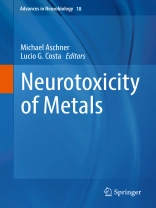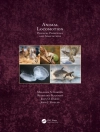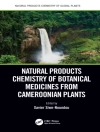Assembles international authorities to address contemporary research in metal neurotoxicity. Essential and non-essential metals play an important role in neurodevelopmental and neurodegenerative diseases. Recent developments in understanding the role of metals in the etiology of these disorders have led to rapid growth in clarifying the pathology of some of the most devastating diseases we face and in identifying potential new therapies. Few books or periodicals have been wholly dedicated to the topic of metals, and this collection is intended to serve as a resource for all researchers interested in metals and their role in health and disease.
Table des matières
Developmental Neurotoxicity of Lead.- Manganese and developmental neurotoxicity.- Inherited disorders of manganese metabolism.- Chemical speciation of selenium and mercury as determinant of their neurotoxicity.- Metals and paraoxonases.- Manganese and the Insulin-IGF signaling network in Huntington’s disease and other neurodegenerative disorders.- Occupational Metal Exposure and Parkinsonism.- Inflammatory activation of microglia and astrocytes in manganese neurotoxicity.- Aluminum and Alzheimer’s disease.- Copper and Alzheimer’s Disease.- Uranium and the central nervous system: What should we learn from recent new tools and findings?.- Methylmercury-induced neurotoxicity: focus on pro oxidative events and related consequences.- Neurotoxicity of Vanadium.- Neurotoxicity of Zinc.- Neurotoxicity of Copper.- Thallium toxicity: general issues, neurological symptoms and neurotoxic mechanisms.- Neurodegeneration-induced by metals in Caenorhabditis elegans.
A propos de l’auteur
Michael Aschner is the Gray E. B. Stahlman Professor of Pediatrics and Pharmacology at Vanderbilt University School of Medicine as well as a Senior Investigator at the Kennedy Center for Research on Human Development. Dr Aschner’s research group has a particular interest in the neurobiology and physiology of astrocytes and the signaling mechanisms associated with central nervous system injury. Dr Aschner’s laboratory studies metal uptake and distribution in the brain, investigating the mechanisms of transport of methylmercury and manganese across the capillaries of the blood–brain barrier. His research utilizes various experimental models (C. elegans, tissue cultures and rodents) to understand the acute toxicity of manganese deposition in the brains of human neonates.
Lucio G. Costa is Professor of Environmental and Occupational Health Sciences at the School of Public Health at the University of Washington. Dr. Costa is a renowned neurotoxicologist whose research interests are focused on understanding the role of neurotoxic substances in neurodevelopmental disorders and other neurological, neuropsychiatric and neurodegenerative diseases. Dr Costa’s research laboratory makes use of a variety of
in vivo and in vitro cell culture systems, transgenic animal models and imaging techniques to study the cellular, biochemical and molecular mechanisms of neurotoxicity.












